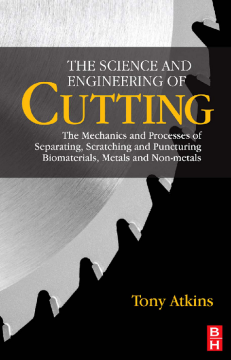
Additional Information
Book Details
Abstract
The materials mechanics of the controlled separation of a body into two or more parts – cutting – using a blade or tool or other mechanical implement is a ubiquitous process in most engineering disciplines. This is the only book available devoted to the cutting of materials generally, the mechanics of which (toughness, fracture, deformation, plasticity, tearing, grating, chewing, etc.) have wide ranging implications for engineers, medics, manufacturers, and process engineers, making this text of particular interest to a wide range of engineers and specialists.
* The only book to explain and unify the process and techniques of cutting in metals AND non-metals. The emphasis on biomaterials, plastics and non-metals will be of considerable interest to many, while the transfer of knowledge from non-metals fields offers important benefits to metal cutters
* Comprehensive, written with this well-known author’s lightness of touch, the book will attract the attention of many readers in this underserved subject
* The clarity of the text is further enhanced by detailed examples and case studies, from the grating of cheese on an industrial scale to the design of scalpels
Atkins has a unique extensive knowledge of machining and cutting, he often knows work from the past that has largely been forgotten that can benefit the future. This book will be unique in really examining all forms of cutting and machining. In particular it will show to the specialist that though often the fracture work involved in machining is small it should not be ignored and is not small in all circumstances. Prof. Atkins writes in a discursive very readable fashion bringing in examples from a wide range of sources. I am sure the book will be accessible to wide range of readers from the first year undergraduate to the most experienced research worker. Brian Cotterel, University of Sydney.
